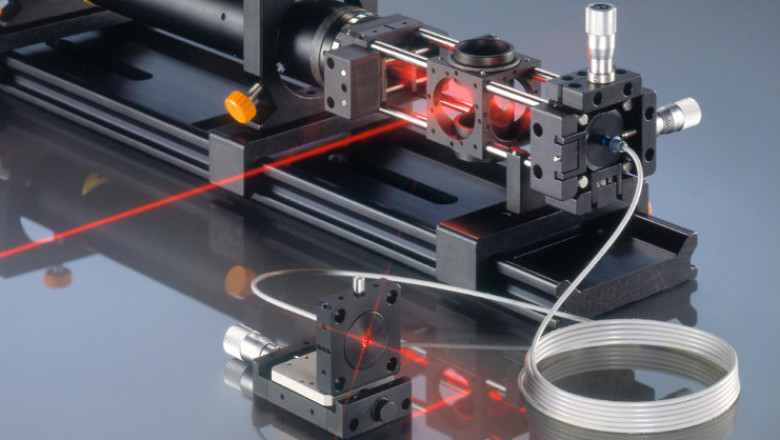views
Biophotonics Market Analysis: Technological Disruptions in Laser-Based Diagnostics and Treatment Modalities
The Biophotonics Market is undergoing a transformative phase, driven by revolutionary developments in laser-based diagnostics and treatment techniques. As precision medicine gains traction, biophotonics technologies are emerging as integral tools for enhancing diagnostic accuracy, therapeutic outcomes, and overall healthcare delivery. These innovations are reshaping clinical approaches across oncology, ophthalmology, dermatology, and surgical disciplines.
Introduction to Laser-Based Biophotonics
At the core of biophotonics lies the application of light-based technologies—especially lasers—for the diagnosis and treatment of medical conditions. Lasers provide coherent, monochromatic light that can be precisely controlled for both imaging and therapeutic purposes. Their non-invasive nature, high precision, and ability to target specific biological structures make them ideal for a broad range of medical applications.
Key Technological Disruptions Shaping the Market
1. Optical Coherence Tomography (OCT)
OCT has evolved into a standard diagnostic tool, particularly in ophthalmology, cardiovascular diagnostics, and dermatology. This non-invasive imaging method provides real-time, high-resolution cross-sectional views of tissue structures. Recent improvements in spectral-domain and swept-source OCT have increased imaging depth and speed, enhancing diagnostic utility across specialties.
2. Photoacoustic Imaging
Photoacoustic imaging combines laser-induced ultrasound with optical contrast, offering deep tissue visualization with molecular specificity. It has gained attention in oncology for tumor detection and vascular imaging, enabling clinicians to monitor disease progression without harmful radiation.
3. Laser Ablation and Photothermal Therapy
Laser ablation uses high-energy laser pulses to remove or destroy targeted tissues, widely applied in dermatology (tattoo and lesion removal), oncology (tumor ablation), and urology (kidney stones). Photothermal therapy, meanwhile, leverages laser-induced heat to selectively kill cancer cells while sparing surrounding healthy tissues.
4. Multiphoton Microscopy
Multiphoton microscopy allows deep tissue imaging with minimal photodamage, making it ideal for live-cell and in vivo imaging. Innovations in laser scanning techniques and fluorescence lifetime imaging are advancing its capabilities in neuroscience and developmental biology research.
5. Laser-Based Biosensors
Laser-integrated biosensors are enhancing point-of-care diagnostics through rapid, sensitive detection of biomolecules. These tools are being refined for use in infectious disease detection, metabolic monitoring, and personalized treatment regimens.
Market Dynamics Influencing Technology Adoption
Increasing Demand for Precision and Minimally Invasive Procedures
Laser-based biophotonics technologies are being rapidly adopted due to their ability to offer precise diagnostics and treatments with minimal patient discomfort, reduced recovery times, and lower risk of complications. This aligns with the global shift towards outpatient care and personalized medicine.
Integration with Digital Health Platforms
Combining laser imaging with AI and digital health platforms is streamlining clinical workflows. Real-time data from laser diagnostics can now be integrated into electronic health records and analyzed with machine learning tools to support faster, data-driven decision-making.
Expanding Applications in Emerging Markets
Emerging economies are investing in healthcare modernization, leading to greater adoption of advanced medical technologies like laser diagnostics and treatments. Public health initiatives and private sector investments are expanding access to biophotonics in regions like Asia-Pacific and Latin America.
Challenges to Market Growth
Despite its strong outlook, the biophotonics market faces several barriers:
-
High initial costs of laser-based equipment limit adoption in low-resource settings.
-
Specialized training is required to operate and interpret laser diagnostics effectively.
-
Regulatory complexities in gaining approval for novel laser-based devices can delay commercialization.
-
Data privacy concerns associated with integrated imaging and diagnostic systems.
Competitive Landscape and Industry Movements
Leading medical device companies and startups are investing heavily in R&D to enhance laser technologies. Strategic partnerships, acquisitions, and clinical collaborations are common as firms seek to expand their portfolios and gain competitive advantage. Regulatory bodies are also updating frameworks to facilitate safer and faster adoption of laser-based medical innovations.
Future Outlook: Where the Market is Headed
As laser-based technologies continue to evolve, the biophotonics market is expected to witness significant long-term growth. Key trends likely to define the future include:
-
Widespread use of AI-assisted laser diagnostics in routine medical exams.
-
Miniaturization and portability of laser systems for field use and remote care.
-
Development of hybrid imaging platforms combining laser, ultrasound, and MRI.
-
Customized phototherapy solutions based on patient-specific biological markers.
These advancements will enable more accurate diagnoses, targeted treatments, and efficient clinical workflows—cementing biophotonics’ role at the forefront of modern healthcare.






















Comments
0 comment